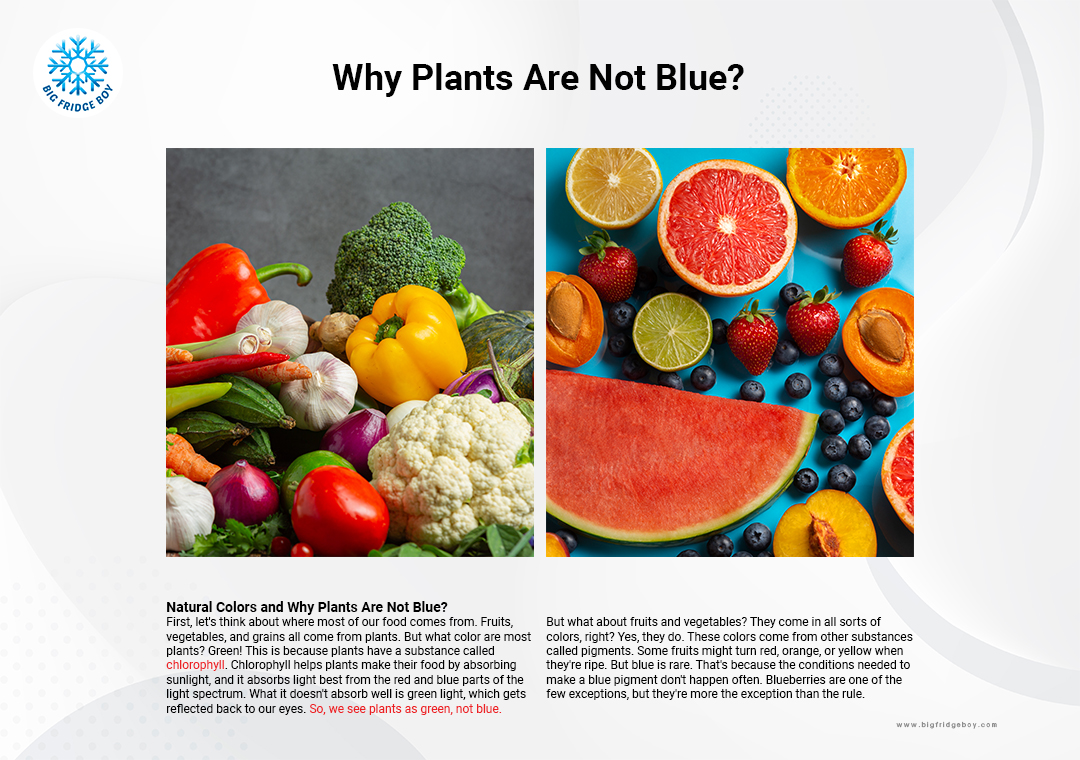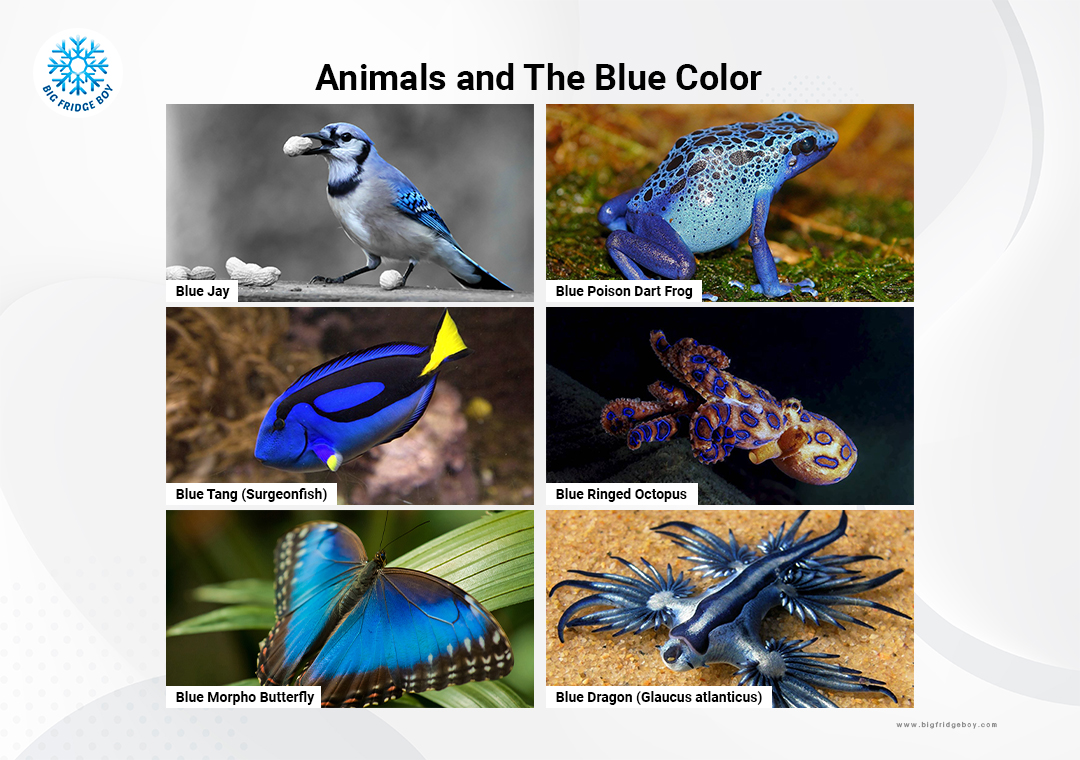The Mystery of Missing Blue in Food
Last updated: 15 Jun 2023 | 1976 Views |

Blue is a beautiful color. It's the color of the sky and sea, the color of tranquility, and the color of creativity. But have you ever noticed something? Blue is a rare visitor when it comes to the food we eat. Whether you go to a grocery store, browse a restaurant menu, or look in your own kitchen, you'll see that blue foods are few and far between. Have you ever wondered why? Let's explore this blue mystery in simple terms.

Natural Colors and Why Plants Are Not Blue?
First, let's think about where most of our food comes from. Fruits, vegetables, and grains all come from plants. But what color are most plants? Green! This is because plants have a substance called chlorophyll. Chlorophyll helps plants make their food by absorbing sunlight, and it absorbs light best from the red and blue parts of the light spectrum. What it doesn't absorb well is green light, which gets reflected back to our eyes. So, we see plants as green, not blue.
But what about fruits and vegetables? They come in all sorts of colors, right? Yes, they do. These colors come from other substances called pigments. Some fruits might turn red, orange, or yellow when they're ripe. But blue is rare. That's because the conditions needed to make a blue pigment don't happen often. Blueberries are one of the few exceptions, but they're more the exception than the rule.

Animals and The Blue Color
What about the other foods we eat, like meat, eggs, or dairy products? Well, these come from animals, and it's even rarer to find blue animals. Some birds and fish might look blue, but this is usually due to the way light bounces off their feathers or scales, not because they're truly blue. And these aren't animals we usually eat.
- Blue Jay: This is a bird native to North America known for its bright blue feathers. However, it's not typically hunted for food.
- Blue Poison Dart Frog: This small, brightly colored frog is found in Central and South America. Its skin produces a poison that can be harmful or lethal, making it inedible.
- Blue Tang (Surgeonfish): A popular marine aquarium fish known for its bright blue color. While not typically consumed as food, some species of surgeonfish are eaten in some parts of the world. The Blue Tang itself, though, is not considered a food fish.
- Blue Ringed Octopus: A highly venomous species of octopus found in the Pacific and Indian Oceans. Its venom is potent and can be fatal to humans, making it inedible.
- Blue Morpho Butterfly: A large, bright blue butterfly found in the tropical forests of Latin America. Obviously, butterflies are not part of the human diet.
- Blue Dragon (Glaucus atlanticus): This is a type of small sea slug that is blue and floats upside down in warm ocean waters. It's not edible due to its diet of poisonous jellyfish, from which it can store venom.
Blue as a Warning Sign
Another reason we don't see much blue food has to do with how we've evolved as humans. In nature, bright colors often serve as a warning. Think about it: many poisonous creatures and plants are brightly colored, and blue is no exception. This might have led our ancestors to avoid blue foods as a survival strategy. This instinct could still be part of us today, making us less likely to choose blue foods.
The Challenge of Making Blue
Even when we make food, creating the color blue is tricky. Food companies use special dyes to color their products. But blue dyes are difficult to work with because they can change under different conditions. For instance, a blue candy could turn greenish if it's exposed to heat or light. This means that food companies often prefer to use other, more stable colors.
Cultural and Psychological Reasons
There are also cultural and psychological reasons for the lack of blue food. In many cultures, there aren't traditional dishes that are blue. And because we don't see blue food often, we might find it strange or unappetizing. Also, we tend to associate colors with certain flavors. Red often means sweet or spiciness, and green might mean sour. But blue? It's hard to say, and that can make blue foods less appealing.
Nutritional Signals and Market Demand
When we see brightly colored fruits or vegetables, our brains might think, "Ah, this is ripe and full of vitamins!" But blue doesn't give us the same signal, which might make us less likely to choose blue foods. And because of all these reasons, food companies don't make many blue foods. After all, they want to sell products that people will buy and enjoy.
In conclusion, the lack of blue in our food comes down to nature's color palette, our evolutionary past, and our cultural and personal preferences. It's a fascinating blend of biology, history, and psychology. And while blue food might be rare, that only makes it more special when we do find it. So, the next time you see a blueberry, take a moment to appreciate its unique, blue beauty.






